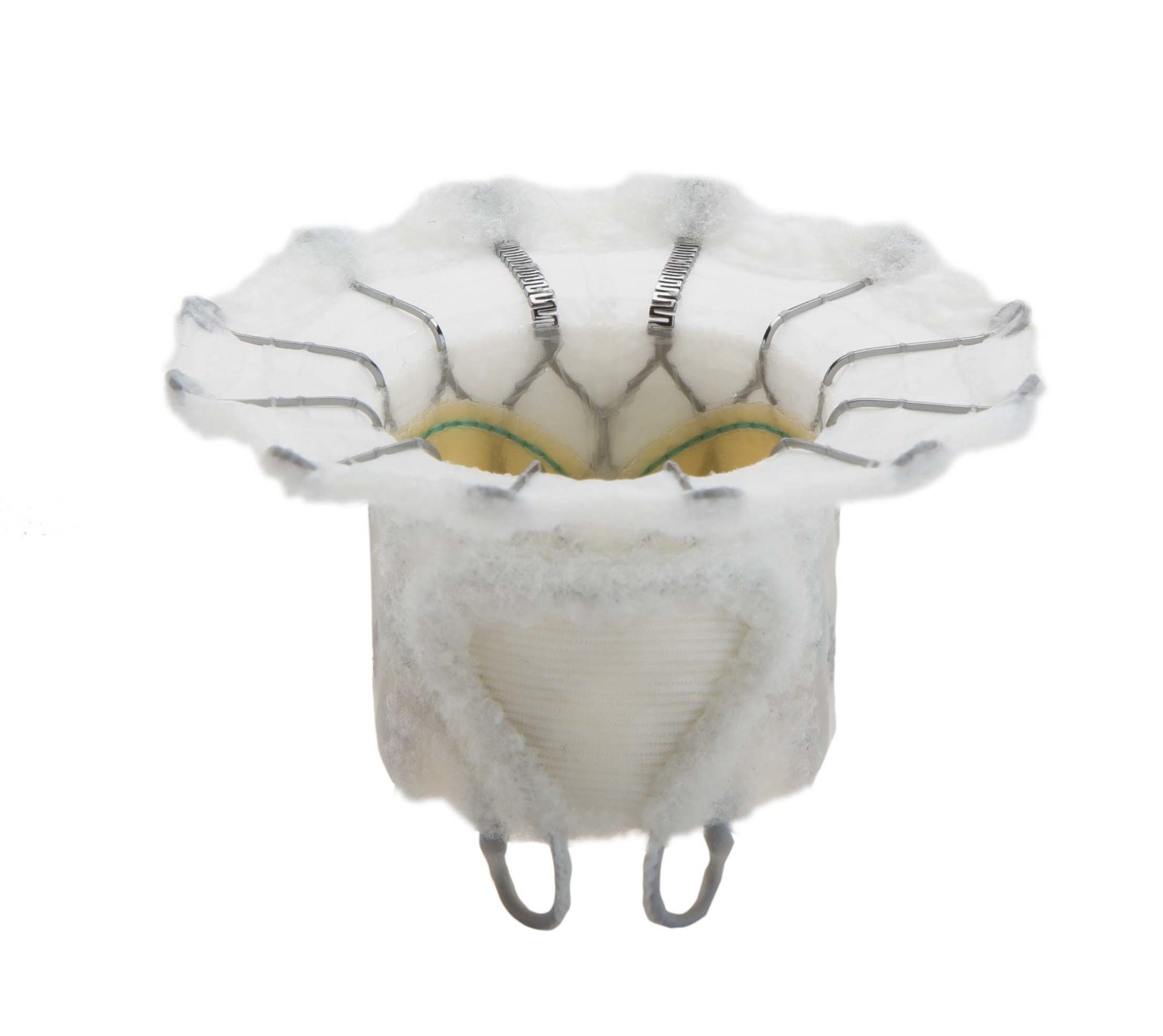Kheradvar et al. EuroIntervention 2015
Aims: Transcatheter aortic valve implantation (TAVI) is an emerging field with technological challenges. One major challenge is to minimise delivery catheter size to reduce vascular trauma, while maintaining features such as repositionability and retrievability. This study was designed as proof of concept of FOLDAVALVE, using a short-term ovine model.
Methods and results: FOLDAVALVE is a fully repositionable and retrievable transcatheter aortic valve with a 14 Fr delivery system whose leaflets are excluded from the stent during crimping. A short-term ovine model (n=3) was used for transfemoral implantations at the Institut Mutualiste Montsouris in Paris. There was a smooth transition of the valve over the aortic arch followed by seamless delivery into the native ovine aortic position. Implantation was followed by repositioning, resheathing and retrieval, then implantation of a fresh prosthesis in the same animal. Transoesophageal echocardiography and fluoroscopy were used to monitor the delivery and implantation processes and to demonstrate valve functionality. Animal sacrifice and direct visu- alisation after explant confirmed excellent final position.
Conclusions: FOLDAVALVE was successfully implanted in the aortic position of an ovine model. FOLDAVALVE is a promising technology which has been shown to be feasible in this preclinical TAVI study.











